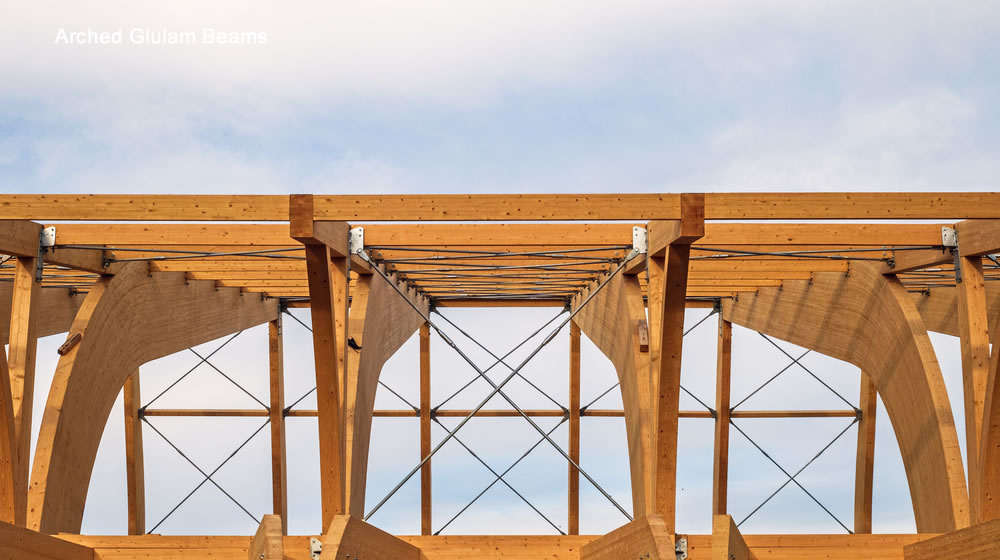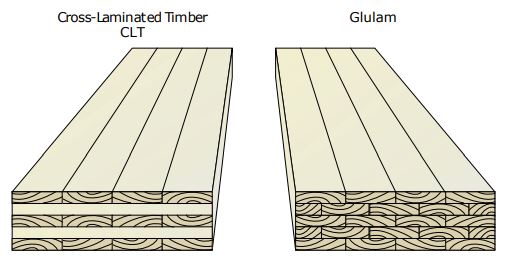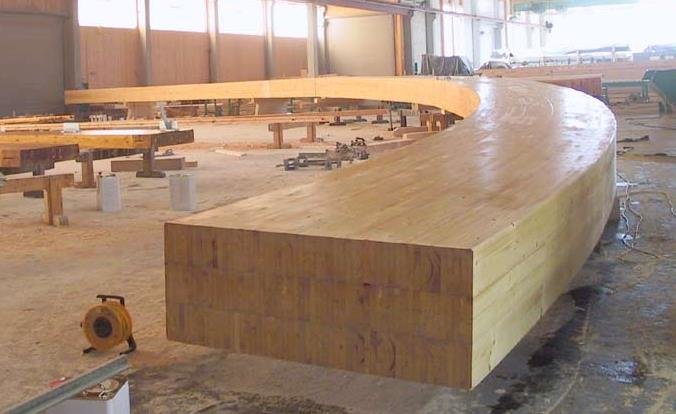
What is the Manufacturing Process for Glued Laminated Timber Beams?
Glued laminated timber, often known as glulam, is a highly versatile and innovative construction material used for making large, strong structural beams. The manufacturing process of these beams is quite fascinating! It involves several steps that transform humble pieces of lumber into powerful structures capable of holding up buildings and bridges. Firstly, the wood selection plays a critical role in determining the quality of the final product. Timber used for glulam is typically softwood species such as Spruce or Douglas Fir. However, hardwoods can also be utilized when needed (or desired). The chosen wood must be kiln-dried to achieve the correct moisture content; this step ensures stability and prevents future warping or twisting. Once dried, workers inspect each piece of timber for imperfections like knots or cracks. They'll remove any defective sections because we don't want those weakening our beam! Next comes planing - where machines smooth out the surfaces to perfect uniformity. It's key that each lamella – that’s what we call the individual layers – fits snugly with its neighbors. Here's where things get sticky - quite literally! We apply adhesives to one side of each lamella. Nowadays,
read more
What is a Glulam Beam and How is it Used in Construction?
A Glulam beam, short for glued laminated timber beam, is a type of structural engineered wood product comprising multiple layers of timber bonded together with durable, moisture-resistant adhesives . Ah, now this isn't your ordinary piece of lumber you might find in a backyard shed! The process of creating a glulam beam involves aligning wood grains in the same direction and laminating them to form a single, larger piece. This technique enhances the strength and stiffness of the beam significantly compared to its solid counterpart. So how do we use these sturdy beams in construction? Well, one can't help but admire their versatility! They're employed in various applications ranging from simple support beams within residential homes to grand arches in cultural buildings or bridges spanning wide rivers. Due to their robust nature (and I must say quite impressively so!), they are particularly favored for large open spaces where minimal structural support interruptions are desired. Now let's not overlook that glulams have an aesthetic edge too! Architects and designers often leave them exposed as part of the interior design to add that touch of warmth and natural beauty only wood can provide - talk about making
read more
Advantages in using Glulam: Properties of Glulam
Big creek lumber stocks boise cascade engineered wood products, bci® i-joists, versa-lam ® lvl beams, and versa-stud® lvl for wall framing, as well as a broad range of rosboro glulam x-beams in architectural grade 3-1/2”, 5-1/2”, 6-3/4”, and 8-3/4” widths and limited 3-1/2” & 5-1/2” widths in industrial grade for builders looking to reduce costs. Bci® joists bci® joists are specially constructed i-joists with flanges made from strong versa-lam® laminated veneer lumber with oriented stranded board webs and approved waterproof structural adhesives, providing outstanding strength and durability. Versa-lam® versa-lam® laminated veneer lumber (lvl) beams and headers eliminate twisting, shrinking and splitting, and deliver flatter, quieter floors and structures. Advantages in using LVL: Properties of LVL timber The appearance is different. Similar to their applications, plywoods come wrapped with a beautiful veneer on the surface while lvl does not. The surface of the plywood and the bottom of the plywood are generally covered with thin veneers such as okoume, bintangor or red oak, or ash, which are very beautiful and emphasize the decoration of the plywood; lvl laminated veneers are used in building construction and structural elements, as they emphasize strength and deflection, and they do
read more
Applications and Uses of LVL and Glulam Beam
Laminated veneer lumber is a versatile wood-based product. Together with plywood, lumber or oriented strand board (osb), lvl can be used for many structural applications. Some of the most popular uses of lvl include i-joists, header, rimboards, truck bed decking, roadway signpost, beam, truss, special applications such as skateboards, and custom-made panels for marine uses. Glulam vs lvl – glulam is made by bonding together boards that are cut from the same log. The boards are arranged so that the grain of each board runs in the same direction. This gives glulam beams great strength and stability. Lvl, on the other hand, is made by bonding together boards that are cut from different logs. The boards are arranged so that the grain of each board runs in opposite directions. This gives lvl beams high strength and stiffness. What Your Project Needs: 332. 8k members since 2003 a forum community dedicated to do it yourself-ers and home improvement enthusiasts. Come join the discussion about tools, projects, builds, styles, scales, reviews, accessories, classifieds, and more! helping you to do it yourself! show less. Nordic lam products render new architectural designs possible for all types of school, commercial, industrial, infrastructure,
read more
Glulam vs LVL Wood: What’s the Difference?
Dipanjan glulam vs lvl are the commonly used woods in the construction industry. Lvl, or laminated veneer lumber popularly used for inside walls. Normally used to stick framing. It is compossed of thin veneers of wood. Glulam, glued laminated timber, known for its strength and beauty is a wood product made by bonding together multiple layers of lumber with special adhesives. Laminated veneer lumber (lvl) lvl is a widely used structural composite lumber product. It is produced by bonding thin wood veneers together in a large billet so that the grain of all veneers is parallel to the long direction. The lvl billet is then sawn to desired dimensions depending on the end-use application. Because lvl is made with scarfed or lapped jointed veneers, lvl is available in lengths far beyond conventional lumber lengths. Popular lvl applications include headers and beams, hip and valley rafters, scaffold planking, and the flange material for prefabricated wood i-joists. Parallel strand lumber (psl) psl is manufactured from veneers clipped into long strands laid in parallel formation and bonded together with an adhesive to form the finished structural section. https://en.wikipedia.org/wiki/Glued_laminated_timber How LVL Beam and Glulam is Constructed and Manufactured? Psl is manufactured from
read more
Glulam vs. LVL: A Comprehensive Guide
November 26, 2021 by borjen yeh, phd, pe laminated veneer lumber (lvl) and glue-laminated timber ( glulam ) products are designed for applications where they will be highly stressed under design loads. Drilling or notching of lvl and glulam should typically be avoided. However, in situations where it is not possible, these guidelines should be followed. Glulam timber beams glulam beams are manufactured with lower-grade material in the mid-depth of the beam and higher-grade material positioned on the top and bottom. The highest grade of material is used as the outermost laminations on the tension side of the beam. Due to this, any drilling, dapping (countersinking), or notching taking place in these outermost tension laminations affects the strength and serviceability of the beam. The decision between glulam and lvl depends on various factors, including project requirements, design considerations, and budget constraints. Here are a few guidelines to consider: span and load requirements: glulam excels in long-span applications and heavy-load situations. If your project demands wide spans or needs to support substantial loads without intermediate supports, glulam might be the preferred choice. Consistency and predictability: lvl’s uniform properties make it an excellent option for applications where consistent performance is crucial, such as engineered
read more